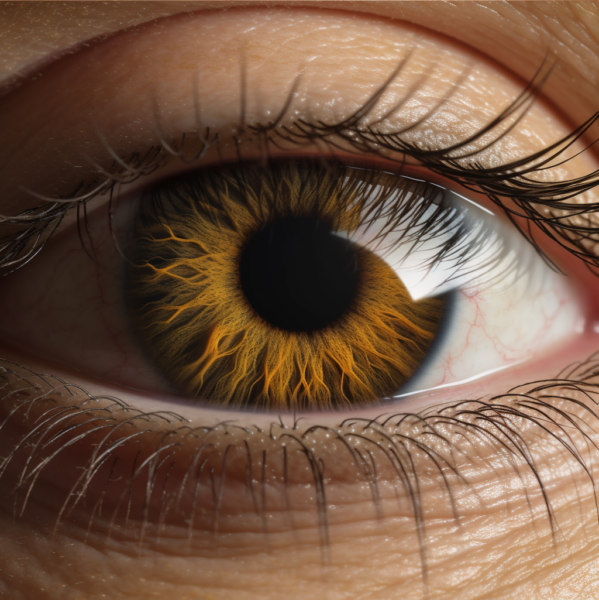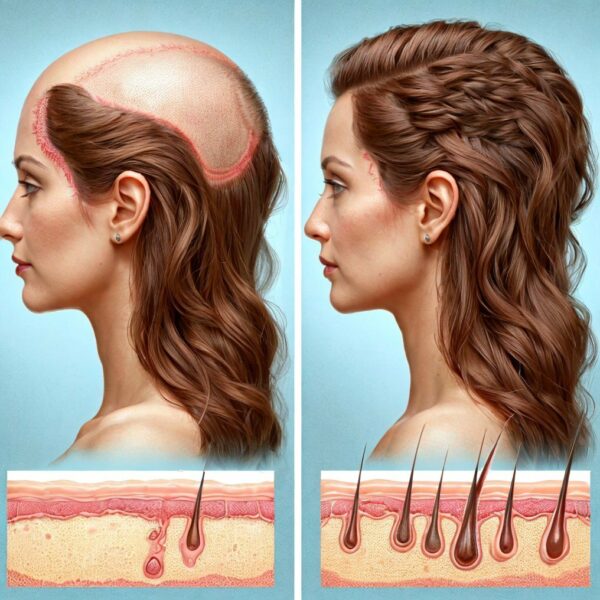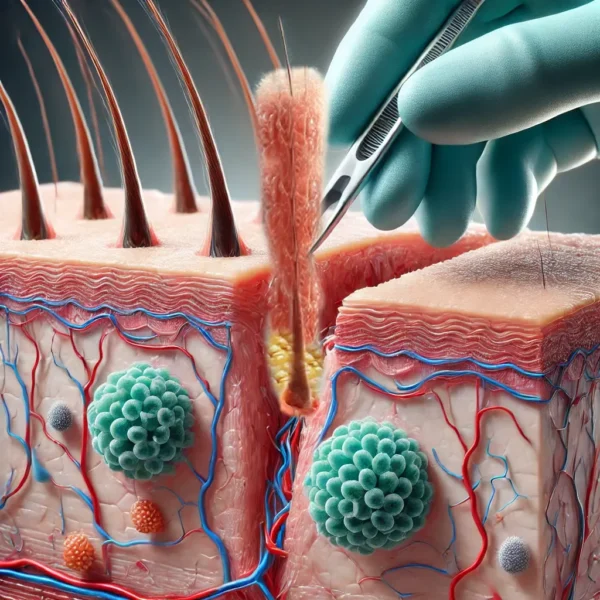Eyelash transplantation, an intricate and specialized procedure designed to restore or enhance eyelash density, has gained significant attention in the field of cosmetic surgery. This innovative treatment caters to individuals experiencing eyelash loss due to various etiologies, ranging from burns and trauma to iatrogenic causes such as laser hair removal. Understanding the underlying causes of hair loss is crucial in determining the eligibility and success of hair transplantation procedures, including those aimed at the eyelashes.
Etiology of Eyelash Hair Loss: The causes of eyelash loss are diverse and can significantly impact the approach and outcomes of transplantation. According to a comprehensive review, burn injuries (chemical, electrical, flame) are the most common cause, accounting for 58% of cases. Other notable causes include surgical treatment (removal of skin cancer for example), physiological aging where eyelash hair follicles may become less active, Leukotrichia (localized white haired eyelashes), and secondary causes of eyelash loss such as scarring alopecia and hypothyroidism. The identification of these causes is essential, as it aids clinicians in selecting appropriate candidates for eyelash transplantation and in devising personalized treatment plans.

Eyelash Transplantation History: The Code of Hammurabi is a well-preserved Babylonian code of Law of ancient Iraq dating as far back as 1772 BC. The code provides evidence of eyelid surgery being performed during those times. It’s not known if there was any attempt to retain eyelashes or improve upon them, but Babylonian surgeons would have understood the importance of eyelashes for eye health.
In 1817, in Halle, Germany, Professor Carl Heinrich Dzondi made the earliest documented attempt to transplant individual eyelashes. He utilized a fine pointed knife to create small incisions along the eyelid’s edge, where he then inserted lashes. Dzondi noted that while some lashes were retained, others were lost. He expressed uncertainty regarding their long-term growth as he was unable to follow-up on the case. Beck in 1838 utilized a pedicle graft including the margin of an eyebrow for provision of lashes. This technique was advocated throughout the 19th century for eyelid and lash repair and is still in use today, albeit only for a small number of patients with extensive eyelid injury.
The next major step in eyelash grafting was the development of methods to graft individual hairs. In 1914, Krusius invented an eyelash transplantation technique using a unique cylindrical trephine (surgical instrument with a cylindrical blade) paired with a syringe to create space for grafting eyelashes along the eyelid margin. This method allowed for the successful transplantation of up to 20 eyelashes per session, with an optimal total of 50 eyelashes needed for full coverage on a single eyelid. Intriguingly, while this approach is close to the modern techniques used today, the method was not widely employed at the time.
Various methods and techniques were developed from the early 1900s for repairing the eyelid and adding eyelashes, usually be grating strips of skin and hair follicles in different ways. Donor skin usually came from the eyebrow or from the nape of the neck. Esser in 1919, developed a seemingly rather complicated approach that involved splitting the recipient eyelid margin and then rotating the outer half upward to be attached to the brow. This would then be later separated from the brow, but keeping a row of hair folicles for the new lid lashes.
Today, the methodology involved in grafting follicles to eyelids is a more simplified process, but as you might expect, it still requires considerable expertise on the part of the surgeon to successfully graft the follicles and produce a natural looking result.
Eyelash Transplantation Techniques: The modern methodology of eyelash transplantation parallels that of eyebrow transplantation and scalp hair transplantation in general. The procedure emphasizes the precise selection and placement of donor hairs. The most prevalent technique is Follicular Unit Transplantation (FUT), which involves harvesting individual donor hairs via Follicular Unit Extraction (FUE) due to the minimal follicular requirements for eyelash enhancement. FUE provides a significant advantage in that only a few hair follicles are taken and can be spread out over a donor area such that there is no obvious loss in hair density in the donor area.
Donor sites vary, most published reports on eyelash transplants today use hair follicles from the temporal and occipital scalp regions. However, donor leg hair follicles have also been used, as they have distinct advantages in texture and growth rate. A notable challenge in eyelash transplantation is the natural tendency of scalp hair to grow straight, posing a risk for trichiasis (hair growing inwards into the eyes) and necessitating frequent grooming. Leg hair, due to its slower growth rate and potential for natural curling, has been explored as an alternative donor source, showing promising results in terms of graft survival and patient satisfaction.
Outcomes: The outcomes of eyelash transplantation are generally positive, with high patient satisfaction and significant improvement in eyelash density. Some swelling and bruising should be expected post-surgery, but this subsides as the grafts heal into place. One significant issue with grafting scalp hair follicles into eyelids is their fast growth rate. This means that the hairs need to be trimmed regularly to keep them to an acceptable length. Also, for those with straight scalp hair, the follicles transplanted to the eyelids continue to grow straight hair. This means the hairs need to be regularly treated with an eyelash curler or perm to make them curved and more like natural eyelashes.
Complications: The procedure of eyelash transplantation is not without risks. Complications from eyelash transplantation range from minor and temporary to more severe issues like infectious folliculitis; though this generally resolves with antibiotics. Specific to eyelashes, complications can include blepharitis (swollen, itchy eyelids) and trichiasis (hairs growing into the eyes), risking corneal scarring and vision loss. Recurrence of the underlying cause of the initial eyelash loss, such as scarring alopecia, also poses risks. Graft failure, particularly with large grafts, demands immediate action from the surgeon. Cosmetic concerns like graft asymmetry can arise, often attributed to uneven anesthesia effects, requiring careful management during surgery.
Postoperative Care and Follow-Up: Postoperative care is vital for the success of eyelash transplants. Patients are advised to keep the grafts dry, use local antibiotics to prevent infection, and gently cleanse the eyelids to avoid debris accumulation. Follow-up care is important to monitor for complications, assess graft survival, and ensure patient satisfaction. The transplanted hairs typically shed within two weeks, with regrowth occurring within 4 to 5 months. Long term, proper grooming, including trimming and curling of the eyelashes, is essential to achieve the desired aesthetic outcome.
Conclusion: Eyelash transplantation represents a beacon of hope for individuals seeking to restore or enhance eyelash density due to various forms of hair loss. The procedure, while complex, offers promising results with careful patient selection, skilled surgical technique, and diligent postoperative care. As the field continues to evolve, further advancements in technique and patient care are anticipated, improving outcomes and minimizing risks associated with this transformative procedure.
Bibliography


